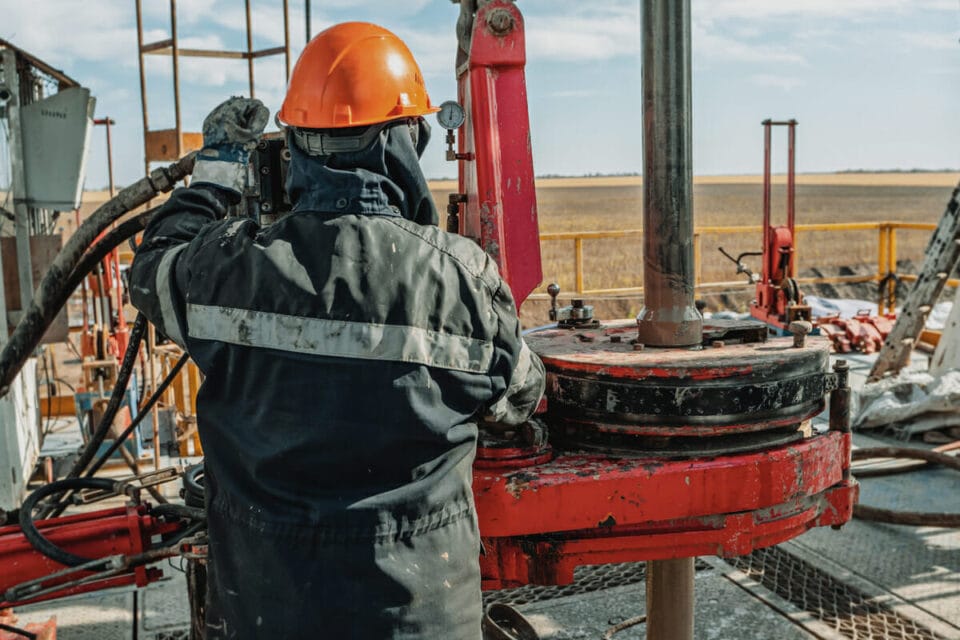
Mental Health Monitoring: Beyond the Checkboxes | Risk Matrix Episode 121
THE RISK MATRIX Cutting-edge podcast on occupational safety and risk management. Hosted by industry titans: JAMES JUNKIN, MS, CSP, MSP,…

2025 has already been a very interesting scenario for the oil and gas industry, particularly as it navigates the challenges and opportunities of the energy transition. The sector, which has long been a major component of the economy, is navigating a complex landscape shaped by evolving energy policies, technological advancements, and shifting market dynamics. Not to mention the continued pressure to increase sustainability efforts.
For Veriforce, which provides critical workforce compliance and safety solutions, helping clients understand these trends is important to supporting the industry’s growth and resilience.
Here’s what our experts think 2025 holds for North America’s oil and gas sector amid the ongoing energy transition.
Whether you believe ESG is here to stay or not, investors and consumers are increasingly demanding cleaner energy solutions, and North America is no exception. Despite President Trump withdrawing the U.S. from the Paris Agreement, the industry will likely see accelerated efforts to reduce greenhouse gas emissions and adopt sustainable practices. But we’re seeing a shift in how they achieve their goals…it’s less about renewables and more about emissions reduction technology.
Carbon Capture, Utilization, and Storage (CCUS): CCUS technologies are expected to continue to play a critical role in helping oil and gas companies meet emission reduction targets. Projects like the Alberta Carbon Trunk Line in Canada and various initiatives in the U.S. are paving the way for large-scale carbon capture adoption.
Renewable Energy Integration: Many oil and gas firms continue to invest in renewable energy projects, such as wind and solar. However, some companies have tapped the breaks on renewables because of low returns. Instead, they’ll focus their resources on CCUS for greater return, while meeting sustainability goals.
The oil and gas industry has always been a leader in technological innovation, and 2025 will be no different. Digital transformation is set to revolutionize operations, improve efficiency, and enhance safety.
Artificial Intelligence (AI) and Machine Learning: AI-driven analytics will enable companies to optimize drilling, predict equipment failures, and improve decision-making. Predictive maintenance, powered by machine learning, will reduce downtime and operational costs.
Automation and Robotics: Drones, autonomous vehicles, and robotic systems will increase, particularly in hazardous environments. These technologies will enhance safety and efficiency while reducing the need for human intervention in high-risk areas.
Predictive Analytics: When it comes to safety in the energy sector, leading indicators are everything. Veriforce’s predictive technology analyzes vast amounts of data to help companies predict incidents before they happen. Companies can leverage this technology to make proactive safety decisions that align with energy transition strategies.
The oil and gas industry faces ongoing workforce challenges, including an aging workforce, skills gaps, and the need to attract younger talent. At the same time, safety remains a top priority, especially as operations become more complex and technologically advanced.
Upskilling and Training: Companies will need to invest heavily in training programs to equip workers with the skills required for the digital age. Veriforce’s compliance and training solutions will play a crucial role in ensuring that workers are prepared to handle new technologies and safety protocols. The key is to meet workers where they are and offer training that is engaging for a younger workforce, ensuring they are equipped to support the energy transition.
Safety Innovations: Advanced safety technologies, such as wearable devices and real-time monitoring systems, will become standard at most companies if they haven’t already. These tools will help prevent accidents and ensure compliance with strict safety regulations.
The oil and gas market in North America will continue to be influenced by global supply and demand dynamics, as well as geopolitical developments.
Energy Independence: North America’s position as a net energy exporter is expected to strengthen, driven by robust production from U.S. shale and Canada’s oil sands. However, fluctuating oil prices and market volatility will remain challenges. When the price of oil is down, there is little incentive for upstream companies to increase production.
Global Demand Shifts: As developing economies grow, demand for oil and gas will persist. North American producers will need to adapt to changing trade patterns and export opportunities.
Policy and Regulation: Government policies will shape the industry’s future. Companies will continue to navigate a complex regulatory landscape while balancing profitability and sustainability, especially as energy transition policies gain momentum worldwide.
Despite the challenges, the North American oil and gas industry is poised for growth and innovation. Collaboration across the value chain will be crucial to unlocking new opportunities.
Partnerships and Alliances: Companies will increasingly collaborate with technology providers, academic institutions, and government agencies to drive innovation and address shared challenges.
Supply Chain Resilience: Building resilient supply chains will be a priority, particularly in light of recent disruptions. This includes diversifying suppliers and adopting digital tools for supply chain management.
New Markets and Products: The industry will explore new markets, such as petrochemicals and liquefied natural gas (LNG). Lower carbon emissions (compared to fossil fuels) have resulted in an increased demand for LNG. In addition, President Trump has lifted the Biden administration’s pause on approvals for new LNG projects. This is a major step towards the U.S. becoming the world’s largest exporter of LNG.
This will be a “wait and see” situation. At the January World Economic Forum in Davos, President Donald Trump made headlines by calling on Saudi Arabia and OPEC to ramp up oil production. The goal? To lower prices and put economic pressure on Russia, in the hopes of ending the war with Ukraine. But OPEC+ isn’t playing along; at least not yet. On February 3, the group’s Joint Ministerial Monitoring Committee (JMMC) reaffirmed its commitment to existing production cuts, emphasizing the importance of unity among its members. This leaves Saudi Arabia in a tricky position. If it caves to US pressure, it risks fracturing OPEC+ and potentially triggering a price war. If it doesn’t, it could strain its relationship with Washington, all while trying to push forward with its ambitious Vision 2030 economic reforms.
It’s a delicate balancing act with huge implications for the global oil market, and beyond. So, what happens next? Saudi Arabia must choose between aligning with the US or standing by its OPEC+ ally, Russia. Boosting production might weaken Russia’s economy, but it could also send oil prices tumbling, cutting into Saudi revenues and complicating its economic diversification plans. On the flip side, resisting US demands could lead to political consequences. Will OPEC+ find a compromise, or will tensions escalate? Whatever happens, the decisions made in 2025 won’t just impact oil markets; they’ll also shape global alliances, economies, and the broader geopolitical landscape. This will be an interesting ride.
Energy companies might not have control over some uncertainties that 2025 brings, but they do have control over ensuring their workers are safe. By staying ahead of trends and fostering collaboration, the industry can navigate the speedbumps this year and beyond, ensuring a resilient and prosperous future.
For Veriforce, this means continuing to provide cutting-edge compliance, training, strategic sourcing, and safety solutions that empower the workforce and drive operational excellence. Together, we can build a safer, more sustainable, and innovative oil and gas industry for North America.
Contact us to learn how our industry experts can help your company proactively prepare for 2025 and beyond.


THE RISK MATRIX Cutting-edge podcast on occupational safety and risk management. Hosted by industry titans: JAMES JUNKIN, MS, CSP, MSP,…
We’ll send you practical and insightful supply chain risk management info that can benefit your business. Plus, important company updates that keep you in the loop.
